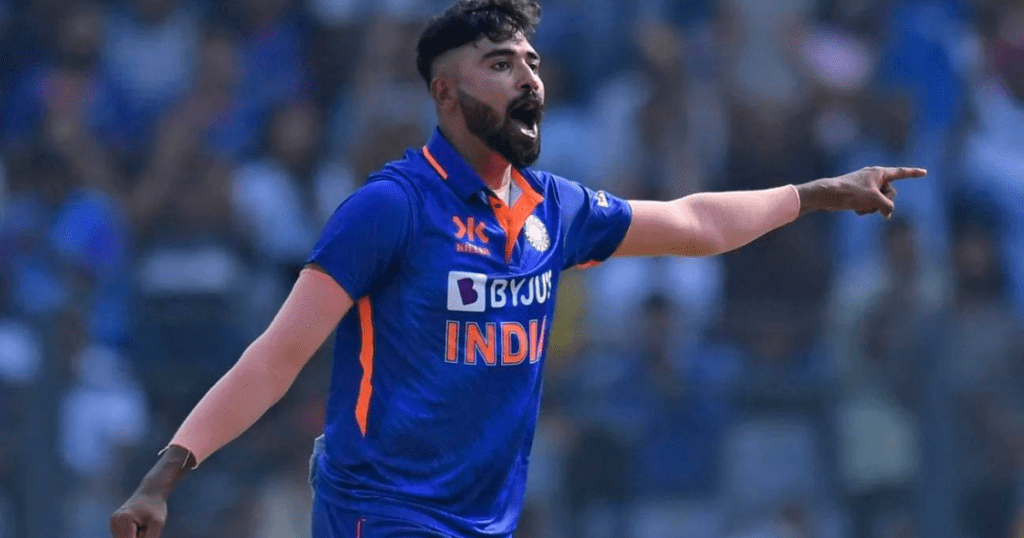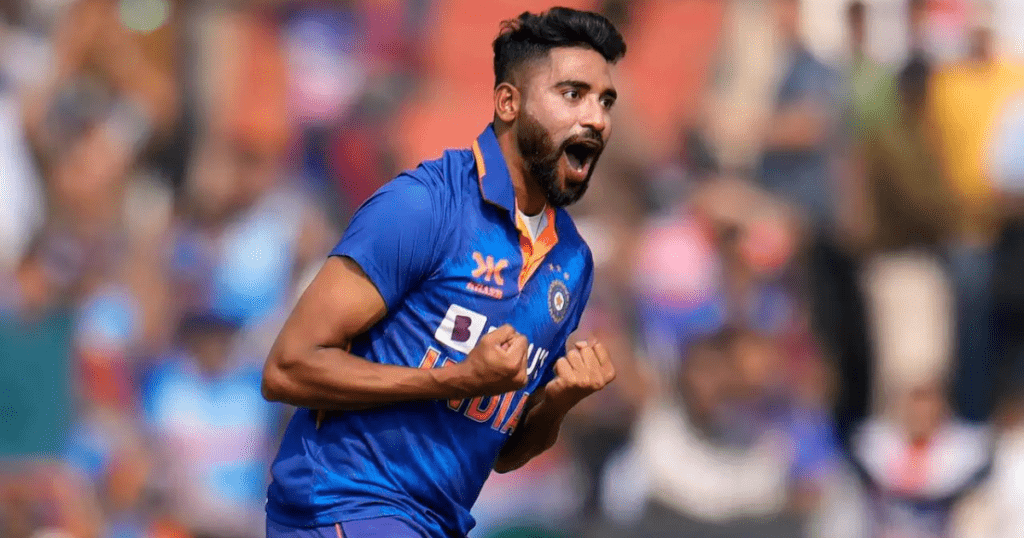highest wickets in one over Mohammed Siraj (India) The bowler from India got 4 wickets in an over during his powerful 2023 match against Sri Lanka.
The roar of the crowd, the clatter of the stumps, and the sight of a batsman trudging back to the pavilion—these are the moments that define the magic of cricket. For a bowler, there’s one feat that stands out as the pinnacle of their craft: taking the highest wickets in one over. It’s a ruthless display of skill, a testament to their ability to dismantle an opposition’s batting line-up in a single, glorious burst.
However, in the rich tapestry of Indian cricket history, this coveted feat remains elusive. Across all formats—Tests, ODIs, and T20s—no Indian bowler has yet achieved the highest wickets in one over. This absence sparks a burning question: why haven’t we witnessed an Indian bowler weave his magic and dismantle an opposition in a single over?

Highest wickets in one over (International Cricket)
| Format | Player Name | Country | Opposition | Year | Wickets |
| ODI | Mohammed Siraj | India | Sri Lanka | 2023 | 4 |
| ODI | Lasith Malinga | Sri Lanka | South Africa | 2007 | 4 |
| Test | Malcolm Marshall | West Indies | England | 1984 | 5 |
| Test | Bob Cottam | Australia | England | 1938 | 4 (x2) Tied Record |
| Test | Arlie Sorensen | Australia | England | 1934 | 4 |
| Test | Maurice Allom | England | New Zealand | 1929 | 4 |
| Test | Ken Cranston | England | South Africa | 1947 | 4 |
| Test | Fred Titmus | England | New Zealand | 1965 | 4 |
| Test | Chris Old | England | Pakistan | 1978 | 4 |
| Test | Wasim Akram | Pakistan | West Indies | 1990 | 4 |
| Test | Andy Caddick | England | West Indies | 2001 | 4 |
- This table only considers wickets taken in official international cricket matches (tests and ODIs).
- Malcolm Marshall holds the record for most wickets taken in a single over in Test cricket with a staggering five wickets.
- Bob Cottam is the only bowler to achieve the feat of taking four wickets in an over twice in Test cricket.
- Lasith Malinga and Mohammed Siraj are the only bowlers from Sri Lanka and India, respectively, to have taken four wickets in an over in ODIs.
The Crucible of Expectations: Bowling Under the Spotlight
India breathes cricket. Millions of people follow the sport religiously, and the pressure on players, especially bowlers, is immense. Taking the highest wickets in one over requires not just exceptional skill but also a bit of luck. A dropped catch or a missed edge can turn a dream into a heartbreak, and the scrutiny from fans and media can be overwhelming. Imagine the scene: you’ve just delivered a searing yorker, the batsman is trapped plumb in front, and a confident appeal goes up. But what if the umpire raises his finger the wrong way? The pressure to deliver under the constant glare of expectation can be a significant hurdle for Indian bowlers chasing this elusive feat.
Also read: https://headlineocean.com/archie-schiller-the-youngest-caption-of-the-australia-team/
Playing Field Matters: The Pitch Factor
Unlike countries like England, South Africa, or Australia, where pitches offer swing and seam movement, Indian pitches tend to be more batting-friendly. This means the ball doesn’t deviate as much in the air, making it harder for pacers to induce nicks, edges, and those spectacular collapses that often lead to the highest wickets in one over. Spinners come into play more often on these surfaces, and while they can be wicket-taking threats, picking up four wickets in an over is statistically less likely compared to pace bowling.
The Spin Dominance and the Elusive Four-Fer
Historically, India has relied heavily on spin bowling. Legends like Anil Kumble and Harbhajan Singh have bamboozled batsmen with their guile and deceptive deliveries. Spin, while effective at creating LBW and bowled dismissals, doesn’t offer the same opportunity for the highest wickets in one over as pace bowling might, with its potential for caught behinds, nicks to the slips, and full-blown batting order crumbles.
Modern Batsmanship and the Rise of Fielding Standards
Modern batsmen are a different breed altogether. They are technically sound, adept at leaving deliveries outside off-stump, and possess the mental fortitude to handle pressure situations. Additionally, fielding standards have improved significantly. Dropped catches are less frequent, making it even harder for bowlers to achieve a four-wicket haul in a single over. The combination of skilled batsmanship and sharp fielding makes the highest wickets in one over an even rarer feat for Indian bowlers.
Also read: https://headlineocean.com/icc-umpire-salary-in-the-t20-world-cup-2024/

Close Calls and the Element of Luck
Cricket is a game of glorious uncertainties. A delivery that looked destined for the stumps might be missed by a whisker, or a caught-behind appeal might be turned down. That touch of luck, that element of chance, also plays a part in this equation. Imagine bowling a scorching yorker, only to see it clip the bail and race past the stumps. The frustration of such a near miss can be immense, a constant reminder of the fine line between achieving the highest wickets in one over and falling just short.
Have We Come Close? The Near Misses
While the coveted four-wicket feat remains elusive, several Indian bowlers have come agonizingly close. Javagal Srinath, the bowling spearhead of the 90s, had figures of 3-3 in an over twice in his ODI career. Zaheer Khan, another pace legend, achieved a similar feat. More recently, Mohammed Shami, known for his fiery pace, managed a triple-wicket maiden in an ODI against New Zealand in 2023. These near misses only highlight the difficulty and sheer brilliance required to achieve the highest wickets in one over.

